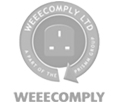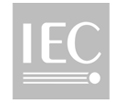How to specify microscope automation systems
Posted in Microscope automation Jan 19th 2023

Factors to consider for a new microscope or automation upgrade
In recent years microscope automation has transformed the way in which laboratories work. By removing or reducing the need for manual intervention, automation has enabled researchers to process more samples at faster speeds, thereby improving productivity and repeatability, while enhancing data accuracy and consistency.
Similarly, automation systems powered by increasingly intelligent software are making research activities even more accessible to a wider range of scientists and technicians; this has simplified training for new-starters and helped researchers carry out advanced tasks that may not have been possible using traditional techniques.
Although the latest generation of automated laboratory microscopes are powerful tools, choosing the best solution – either new or as an upgrade – can be a challenge for first-time purchasers and experienced users alike.
Specifying your microscope automation system
For those fortunate to have an unlimited budget, the simple solution is to choose the most powerful, highly specified system you can find. The chances are, however, that you’ll end up with a fantastic instrument but only ever use a small percentage of its capabilities – like buying a high performance sports car and never getting out of first gear!
Talking to potential suppliers at an early stage is therefore crucial. Nonetheless, be aware that it’s possible to be drawn into the exciting world of the ‘latest developments’ in automation and microscope technology. Human nature being what it is, it’s all too easy to over-specify a system and spend more than you need.
Our advice is to listen to what several suppliers have to say, review their recommendations and then take time to consider them carefully.
Seeing things differently
Most reputable suppliers – and we include ourselves in this category – want happy and loyal customers who return time and again. That’s why we try and provide different options to help you meet your desired objectives.
At Prior we can provide a custom OEM solution that will fit your needs and budget. We begin with talking to our customers and finding out exactly what they want to do and discuss with them the options that will fit their requirements and budget. This usually involves a multi-discipline team from Sales, Product Management and R&D.
In most instances we can use our OpenStand microscope to give customers a quick solution. The both the OpenStand upright and inverted versions have an array of options and accessories available and we will modify the components depending on the customer’s needs. The benefit of the OpenStand is that it provides a prototype instrument quickly to the customer to hone their product and software to develop a production instrument. Any hardware and software modifications developed when using the prototype instrument can be easily ported into the production instrument because we use the same core components in our prototype and final instrument.
We take the same approach when helping customers select the best automation solution, by matching the stage to the application and budget. Prior has a vast range of stages, focus, filter wheels and shutter to suit most microscopes. As an example, our ProScan range of motorized stages typically use stepper to drive precision ball screws, with encoder options if required and are usually the best option for automation of microscopes. We also have linear motor stages to give the ultimate control and precision capable of being driven at very low speeds of microns/second with low velocity ripple to very high speeds up to 300 mm/sec with the same level of control.
Alternatively, Prior’s Queensgate piezo driven units provide even greater precision and high speed motion, albeit over a much smaller area. These devices can be combined with all our stages for applications where images have to be stacked: Prior stages providing movements up to 300 mm at sub-micrometer resolution and the Piezo unit providing movements up to 800 micrometers at nanometer resolution. Queensgate has a range of Piezo driven products for microscope stages and objective positioners as well as providing custom-made solutions to suit the most demanding situations that require extremely high precision.
Ultimately, the best choice of system is driven not by the technology available but by the research you are carrying out, factors such as the resolution and repeatability that you need to achieve, and by your budget.
That’s why talking to a supplier such as Prior Scientific, with over 100 years of experience and the ability to offer a wide range of microscope automation and nanopositioning technologies, should be your first step when choosing your new system or upgrade.
Discuss your application needs
Contact our technical sales team to learn more












